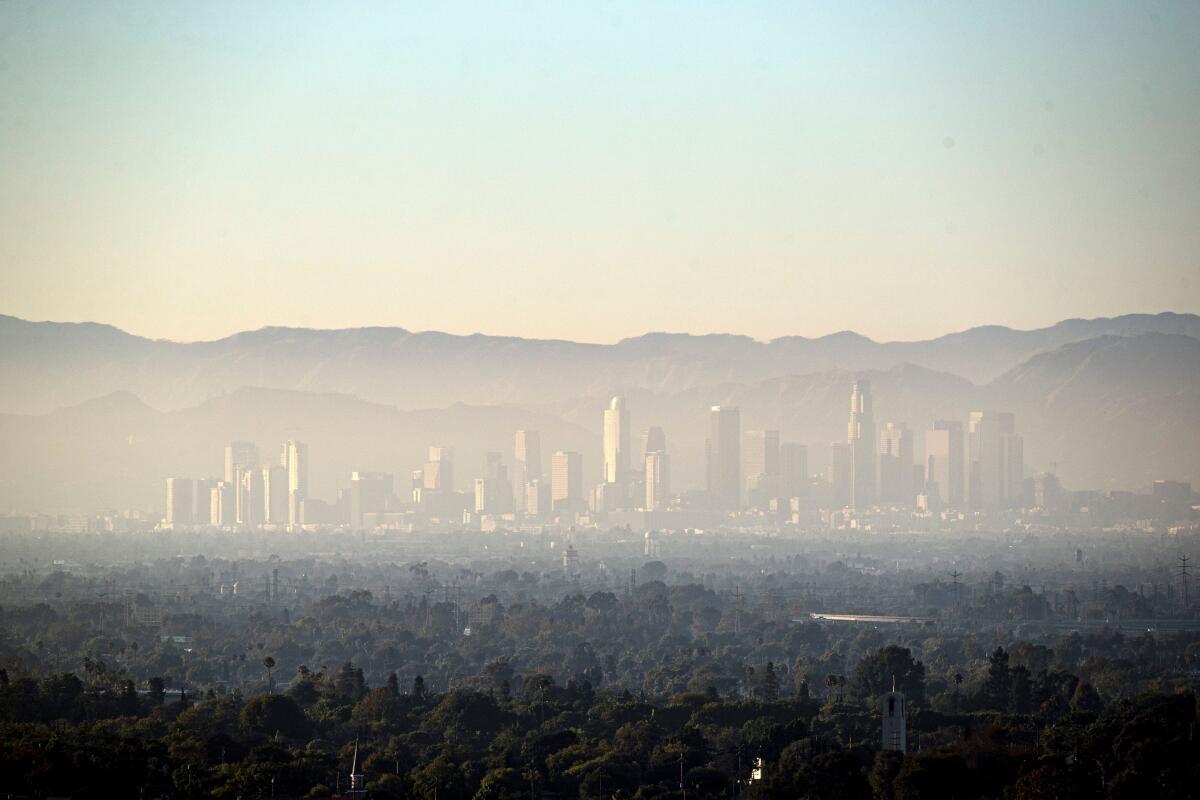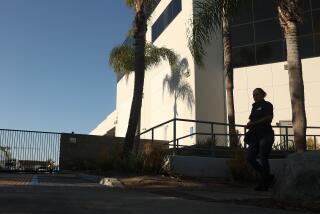Op-Ed: How cities can break the link between heat and crime and save lives

- Share via
Seeing headlines about rising violent crime in Los Angeles and other cities? We could blame the weather.
And we could do something about it.
The heat doesn’t torture everyone in the same way. Wealthy people are protected from the worst of it. Those who don’t hop on a rocket to space still might use more conventional coping strategies like slipping away to a vacation somewhere cooler. Those who don’t escape the city still are spared, because more affluent people tend to live in cooler parts of cities and have access to newer housing featuring central air conditioning.
Poor people, meanwhile, face the greatest challenges posed by extreme weather. Empirical researchers have documented several troubling data patterns that emerge when people are trapped in hot conditions. Teenagers who attend public high schools that do not have air conditioning have learned less when exposed to high heat. This educational gap associated with heat exposure decreases when such schools install central air conditioning. In Mississippi prisons, more fights break out on hot days in prisons that do not have air conditioning.
Our own recent research documents that heat exposure raises the likelihood of being a victim of violent crime in poor neighborhoods in the city of Los Angeles (more than it raises risk in richer neighborhoods). It is well known that violent crime rates are higher in poorer parts of the city. It is also well documented that violent crime rates are higher on hotter days. Our research uses daily crime data for 1,288 police reporting districts from 2010-17 to document that the positive association between urban poverty and local violent crime rates is accentuated on hot days. While the LAPD does not provide customized data for academics, we used open-source data to conduct our study.
The murder count soared in 2020 and into 2021 in many major American cities. This shock reverses a long-run trend. Over the last 40 years, the murder count in the city of Los Angeles has fallen sharply, but in 2020 the murder count in the city rose 36% from 2019, to 350.
In recent work, we have re-estimated our same statistical models using data from 2010 through mid-2021, and our key findings remain intact. Poor parts of Los Angeles face the greatest increases in violent crime rates on hotter days. In such areas, people live at high population density in older housing units, often without any or adequate air conditioning. There are effects beyond the direct victims of crime: Urban violence in poor neighborhoods acts as a tax on businesses operating there and lowers the quality of life in these areas as people hunker down to protect themselves.
Ongoing research has identified strategies for breaking the link between heat and crime in disadvantaged neighborhoods. Some examples include extending hours at neighborhood cooling centers, investing resources to offer night basketball for teens and young adults, and following the lead of Baltimore and Chicago by introducing strategically timed “ceasefire” days that coincide with expected hot days in the city.
Such novel solutions supplement traditional approaches such as having more police actively patrolling on hotter days. In our study, we find that the police make fewer stops of vehicles on hotter days. One explanation for this fact may be the discomfort for the police in exerting effort on such days. Reversing that trend could help curb the rise of crime along with heat.
These and many other ideas need to be tried in the real world, and if successful, expanded. The next mayor of Los Angeles could form a climate adaptation research team composed of local academics and community leaders. This group could suggest targeted interventions that would improve community quality of life on hot days and help us to learn what works through a formal “before/after” statistical analysis.
Such experimentation not only will improve quality of life in our city’s poorest neighborhoods but also will help Los Angeles to emerge as a leader in adaptation to cope with some of the scary consequences of climate change.
Kilian Heilmann is an economist at Lyft. Matthew E. Kahn is the provost professor of economics at USC. Cheng Keat Tang is an assistant professor of economics at Nanyang Technological University in Singapore.
More to Read
A cure for the common opinion
Get thought-provoking perspectives with our weekly newsletter.
You may occasionally receive promotional content from the Los Angeles Times.










